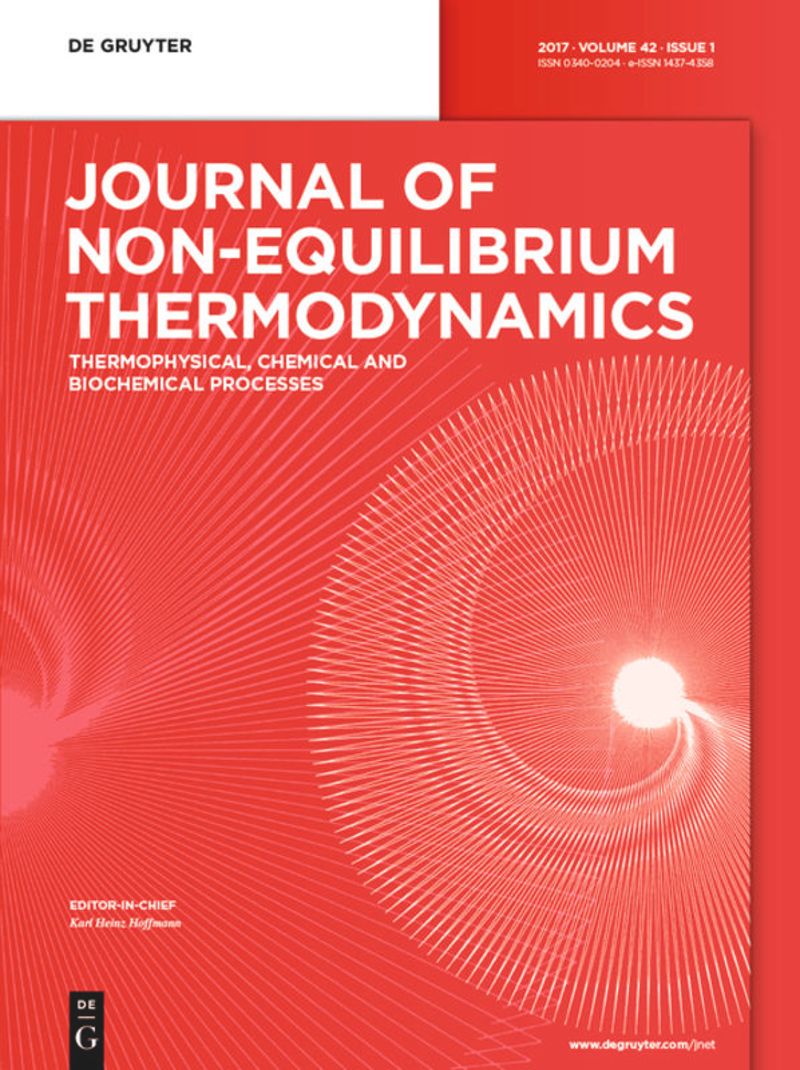提高太阳能集热器热性能的策略
IF 4.2
3区 工程技术
Q1 MECHANICS
引用次数: 0
摘要
摘要:本文评价了一种改进换热器传热的被动方法,即纳米流体的使用。所有的计算都是在恒定的体积流量下进行的。该研究检测了三种体积浓度为0 - 4%的CuO、MgO和al2o3颗粒流体。结果表明,传热系数随温度的升高而增大。al2o3纳米流体(浓度为4%)的热性能最好。加入4%含量的MgO,传热增强幅度在15%到22%之间,而类似浓度的CuO,传热增强幅度更大,达到25%。值得注意的是,纳米Al 2o3的引入显著提高了传热性能,其潜在改善幅度可达36%。对于体积百分比在1 ~ 4%之间,纳米颗粒直径在25 ~ 70 nm之间的几种纳米颗粒(al2o3、CuO、sio2和ZnO), Nusselt数随着颗粒体积分数和雷诺数的增加而增加。对于所有的纳米流体,时间平均努塞尔数随固相体积分数增加小于5%而增加。本文章由计算机程序翻译,如有差异,请以英文原文为准。
Strategies to improve the thermal performance of solar collectors
Abstract The paper evaluates a passive method for heat transfer improvement in heat exchangers, which implies the use of nanofluids. All calculations were carried out with a constant volumetric flow rate. The study examines three fluids with 0–4 % volume concentrations of CuO, MgO, and Al 2 O 3 particles. The results indicate an increase in the heat transfer coefficient with increasing temperature. An Al 2 O 3 nanofluid (4 % concentration) contributed to the best thermal performance. The incorporation of a 4 % content of MgO yielded an augmentation in heat transfer ranging from 15 % to 22 %, whereas an analogous concentration of CuO led to a more substantial enhancement of 25 %. Notably, the introduction of nanoparticles of Al 2 O 3 produces a remarkable augmentation in heat transfer performance, with potential improvements of up to 36 %. The Nusselt number increases with increasing particle volume fraction and Reynolds number, according to results obtained for several nanoparticles (Al 2 O 3 , CuO, SiO 2 , and ZnO) with volume percentages in the range of 1–4 % and nanoparticle diameters of 25–70 nm. For all nanofluids, the time-averaged Nusselt number rises with a solid phase volume fraction increase of less than 5 %.
求助全文
通过发布文献求助,成功后即可免费获取论文全文。
去求助
来源期刊
CiteScore
9.10
自引率
18.20%
发文量
31
审稿时长
1 months
期刊介绍:
The Journal of Non-Equilibrium Thermodynamics serves as an international publication organ for new ideas, insights and results on non-equilibrium phenomena in science, engineering and related natural systems. The central aim of the journal is to provide a bridge between science and engineering and to promote scientific exchange on a) newly observed non-equilibrium phenomena, b) analytic or numeric modeling for their interpretation, c) vanguard methods to describe non-equilibrium phenomena.
Contributions should – among others – present novel approaches to analyzing, modeling and optimizing processes of engineering relevance such as transport processes of mass, momentum and energy, separation of fluid phases, reproduction of living cells, or energy conversion. The journal is particularly interested in contributions which add to the basic understanding of non-equilibrium phenomena in science and engineering, with systems of interest ranging from the macro- to the nano-level.
The Journal of Non-Equilibrium Thermodynamics has recently expanded its scope to place new emphasis on theoretical and experimental investigations of non-equilibrium phenomena in thermophysical, chemical, biochemical and abstract model systems of engineering relevance. We are therefore pleased to invite submissions which present newly observed non-equilibrium phenomena, analytic or fuzzy models for their interpretation, or new methods for their description.

 求助内容:
求助内容: 应助结果提醒方式:
应助结果提醒方式:


